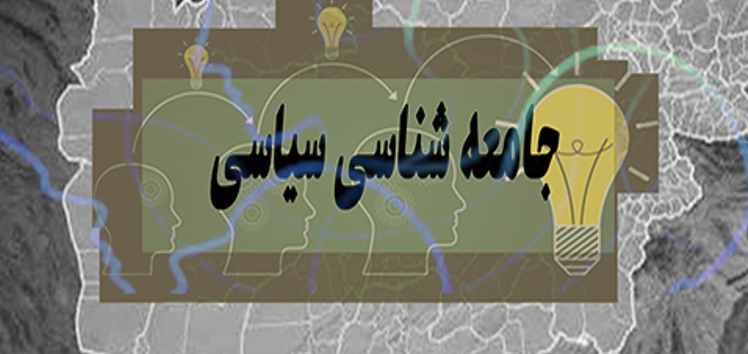jameghor


Ghor Ghowr , or Ghur , mountainous region and province (1979 est. pop. 341,000), 14,085 sq mi (36,479 sq km), W central Afghanistan, including a ruined medieval city of the same name. Chagcharan is the provincial capital. The powerful Muslim Ghorid dynasty was established in the former city of Ghor in the 12th cent. It was overthrown by Muhammad of Khwarazm in 1215. Mongols under Jenghiz Khan took Ghor in 1221, after which the Karts (Mongol clients) ruled (c.1245-1379). The city then lapsed into obscurity.
Ghowr or Ghor
is one of the thirty-four provinces of Afghanistan. It is located in central Afghanistan, towards the north-west. The capital of Ghor is Chaghcharan.
Ghowr, which was a part of Persia for many centuries in the past history, was one of the regions which participated in the Persian Cultural Revival after the Arab invasion of Persia. The name Ghowr is a dialectal version of the Middle-Persian word gar meaning mountain. The same word is spelled as ghar in Pashto language.
Ghowr was also the centre of the Ghurid dynasty in the 12th and 13th century. The remains of their capital Firuzkuh, including UNESCO World Heritage site the Minaret of Jam, are located in the province.
19th century American adventurer Josiah Harlan claimed the title Prince of Ghor for himself and his descendants in perpetuity, in exchange for military aid during local factional fighting.
On June 17, 2004, hundreds of troops of Abdul Salaam Khan, who had rejected the Afghan government’s plan to disarm regional militias, attacked Chaghcharan and took over the city in an afternoon-long siege. Eighteen people were killed or wounded in the fighting and province governor Mohammed Ibrahim fled. Three days later the Afghan government announced that it would not retake Chaghcharan. However, Khan and Ibrahim began negotiations soon after, but reached no agreements. Khan’s troops left Chaghcharan on June 23, a day ahead of the arrival of an Afghan National Army battalion, led by Lieutenant-General Aminullah Paktiyanai, arrived with the support of about twenty U.S. soldiers.
Chagcharan
Chagcharan, the capital of Ghor province, is also the main town in remote Ghor province, 220 miles [350 kilometers] west of Kabul. Ghor [Ghowr or Ghur] is a mountainous region and province (1979 est. pop. 341,000), covering 14,085 sq mi (36,479 sq km), in west central Afghanistan. It includies a ruined medieval city of the same name. The powerful Muslim Ghorid dynasty was established in the former city of Ghor in the 12th century. It was overthrown by Muhammad of Khwarazm in 1215. Mongols under Jenghiz Khan took Ghor in 1221, after which the Karts (Mongol clients) ruled (c.1245-1379). The city of Ghor then lapsed into obscurity.
Two decades of war in Afghanistan, including a decade-long Soviet occupation and ensuing civil strife, left Afghanistan impoverished and mired in an extended humanitarian crisis. Government infrastructure, including the ability to deliver the most basic health, education, and other social services, has collapsed.
In late 2001 World Food Program (WFP) food assistance arriving in country was being delivered through Pakistan, with additional shipments planned through Turkmenistan, Tajikistan, and Iran for the north, northeastern, and western provinces. Food assistance is being delivered to beneficiaries through WFP’s local NGO partners. However, in certain areas, such as Chagcharan in Ghor, a lack of partners made distribution difficult.
By late 2003 the existing network of stations was already broadcasting important news stories facing the communities they serve: stories such as political developments, updates on infrastructure improvement, agricultural advances and educational opportunities. Radio stations were to be set up in Qarabagh, Khost, Balkh, Konduz Chagcharan and Baraki Barak during early 2004.
Warlords overran this provincial capital, forcing the governor to flee and leaving 10 people dead. Fighters armed with machine-guns and rocket-propelled grenades seized Chagcharan. Govenor Mohammed Ibrahim fled to Herat, while his deputy and a group of nominally loyal militiamen and police to regrouped in a village a few kilometers to the north of Chagcharan. The fighting followe weeks of tension between allies of the provincial military commander Ahmad Murghabi, who was also driven out, and rival tribes over positions in the local administration. A group led by commander Rais Salam launched the attack after rejecting an offer of control of four government departments, including police and intelligence.
The US military sent a B-1B bomber over the city to calm the fighting while it evacuated beleaguered UN staff by helicopter. President Hamid Karzai decided to send a battalion from the new U.S.-trained Afghan National Army to Chagcharan. Some 200 troops were initially sent by road from the western city of Herat, and another 500 followed shortly.
Chagcharan Airport
By 09 October 2001 Ismail Khan, a legendary commander of NA forces in western Afghanistan, had captured the airport outside Chagcharan and were close to capturing Chagcharan itself. This put Khan’s forces in position to take the strategic city of Herat, opening a military supply route for his forces from Iran.
In June 2004 Afghan soldiers took a break at the Chagcharan airport in Ghor province. A battalion of soldiers arrived with the mission to drive out rival militias from the region.
Commander Rais Salam, once loyal to the Taliban, insisted he wanted Karzai’s governor to return and said he would respect the decisions of the central government, including troops sent from Kabul.
On 15 July 2004 Afghan National Army troops killed two men in a shoot-out that led to a mob attack on an election offic. The shooting started when Afghan soldiers tried to steal money from people they were searching on the western side of Chagcharan. The dead were two local militiamen, also said to be area shopkeepers. A crowd gathered to protest the killings. Demanding the bodies of the two people killed, the mob then marched on an army outpost at the area airport and stormed a compound used by the joint UN-Afghan electoral commission. Seventeen people, mostly foreigners, were evacuated by helicopter to the western city of Herat.
Chagcharan Provincial Reconstruction Team [PRT]
Late in the summer of 2005, two more NATO-led PRTs became operational, completing the International Security Assistance Force’s expansion into western Afghanistan, Tissot van Patot said in a published statement. Lithuania led the new PRT in Chagcharan, capital of Ghor province, and Spain led the PRT in Qaleh-Now, capital of Baghdis province.
As of mid-June 2005 deployment operations for the PRT in Chagcharan were well underway. Since June 6, ISAF had received seven C-17 cargo flights to airlift both Lithuanian personnel and equipment into Herat Forward Support Base. Herat provided the staging base support for Lithuanians as they receive the final cargo flights that brought their remaining equipment into Afghanistan.
As of mid-June 2005, there were more than 80 Lithuanian Forces on the ground now in Herat. They were already training and have been out on the range and familiarizing themselves with ISAF operations in the western region. The formal move into Chagcharan occured in late June by ground convoy and also by C-130 airlift flights. The plan was to have PRT Chagcharan operational by mid-July under the command of Col. Gintautas Zenke-Vicius.
The PRT also established a military medical treatment facility and soon thereafter began active patrols throughout their area of operations. CIMIC project work was ongoing in the Chagcharan under the auspices of USAID, and PRT Chagcharan staff began to support CIMIC operations over the course of the following months.
Preliminary tasks for the PRT were to strengthen professional and personal ties with the local government officials in Chagcharan and in Ghor Province. Lithuanian forces also worked closely with ANA forces that deployed into the Chagcharan area in mid-June 2005. Approximately one company of ANA assisted Lithuanian forces in the set up of their PRT operations.
Ghurids
The Ghurids (or Ghoris; self-designation: Shansabānī) were a dynasty in Sunni Muslim dynasty in Khorasan. Tājīk origin. The Ghurid’s empire was based in Ghor (now in Afghanistan), and stretched over a vast area including Iran, Afghanistan, Pakistan, India, Turkistan, Iraq and parts of other Arab countries.
Between 1175 and 1192 under the leadership of Muhammad of Ghor, they occupied Uch, Multan, Peshawar, Lahore, and Delhi. In 1206, one of the Ghurid generals, Qutb-ud-din Aybak, the conqueror of Delhi, made himself independent and founded the first of a succession of dynasties collectively known as the Delhi Sultanate (1206-1526). Currently, the area which once was the heart of the Ghurid Civilization has been deserted and infighting between Afghans, Soviet invasions, and other strife has destroyed many archeologically valuable structures and items across Afghanistan
پر بیننده ترین مقالات
-
سلطان رضیه غوری
-
آب و هوای ولایت غور
-
سرگذشت سیاه موی و جلالی
-
اصطـــلاحــــات و واژه های شیرین لهجـهً غوری
-
شهر فیروز کوه مشهور ترین پایتخت سلاطین بزرگ غوری
-
بیوگرافی شهید محمد رفیق علم
-
ولسوالی های ولایت غور
-
زندگی نامه مختصر مرحوم سید محمد رفیق نادم رئیس بنیاد فرهنگی جهانداران غوری حوزه غرب
-
نثار احمد حبیبی غـوری کیست؟
-
Muhammad of Ghor
مجلات و کتب
جام غور در شبکه های اجتماعی
گزارشات و مصاحبه ها
-
قاری رحمت الله بنیان گزار گروه داعش و سرکرده گروه طالبان ولایت غورطی یک عملیات نیروهای امنیتی افغان در ولایت فاریاب کشته شد
-
کارگاه سه روزه آموزش حقوق بشر و حقوق بشردوستانه برای نیروهای امنیتی و دفاعی در ولایت غور
-
گرامیداشت شانزدهمین سالروز تأسیس کمیسیون مستقل حقوق بشر افغانستان در ولایت غور
-
امضاء تفاهمنامه نشر برنامه های حقوق بشری با چهار رادیو در ولایت غور









Ghor Province